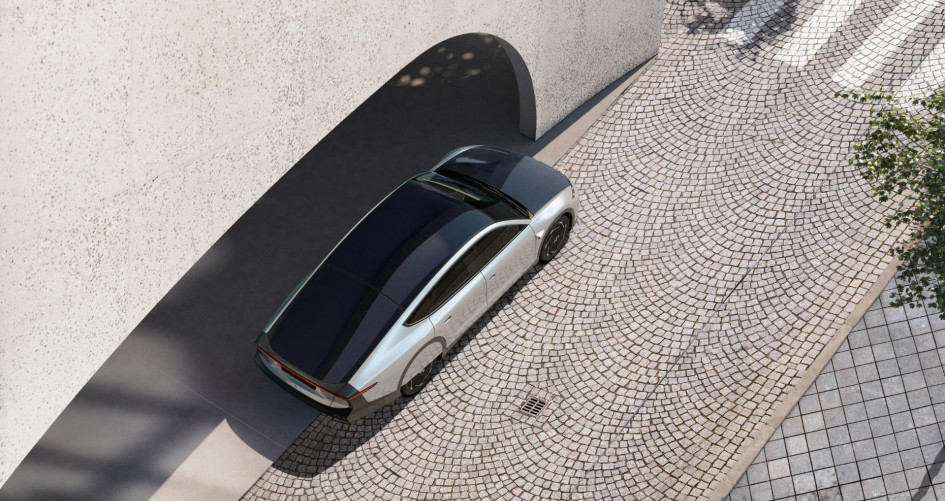In 1955, a General Motors employee, William Cobb invented the first model solar-powered car, a tiny 15-inch vehicle, which caused quite a stir when it debuted at a car show in Chicago. Despite all the optimism that surrounded the world’s first solar-powered prototype, no one in the following 65 years has managed to turn that model into a full-sized solar-powered commercial vehicle.
A viable, mass produced solar car would make a big difference both to emissions and air pollution. The transport sector is responsible for nearly 25 per cent of energy-related emissions. Vehicle emissions are also a significant source of urban air pollution. As the IPCC Working Group III Report published earlier this year stated: “Meeting climate mitigation goals would require transformative changes in the transport sector.”
UNFCCC’s Marrakech Partnership’s Transport Pathway highlights the need for the “clean electrification of all light-duty vehicles and trains, zero emission liquid fuels for planes, vessels and other long-distance transport.”
And while there has been much progress around electric vehicles (EVs) in recent years, take-up is still a fraction of fossil fuel powered cars. According to the IEA, EV sales more than doubled in 2021 to 6.7 million, not even 9 per cent of global car sales.
In recent years there has been an upswell of interest in integrating solar panels into cars: Mercedes-Benz revealed plans to outfit an upcoming electric car with rooftop solar panels, while Toyota has at times offered limited-capacity solar panels as an add-on to its Prius hybrid.
Next year, Munich-based Sono Motors plans to launch a €28,500 solar-assisted family car, while the California-based start-up Aptera Motors said in 2020 that pre-orders for its futuristic three-wheeled solar electric vehicle sold out in less than 24 hours.
Aptera had to push back its initial production date but said earlier this year that it is aiming to produce 10,000 cars by the end of 2022, eventually ramping up production to 600,000 cars a year. Whether that happens remains to be seen: mass producing cars is an incredibly difficult business, particularly a car that is attempting to reinvent how we get from A to B through the use of solar panels.
Another solar car that has just launched is the Lightyear 0, which the Dutch company describes as the “world's first long-range production-ready solar electric vehicle.” Lightyear’s five co-founders were all members of the Solar Team Eindhoven, which won the World Solar Challenge in Australia three times and decided to try to produce a solar car for the mass market.
The car has five square metres of solar panels on its roof, bonnet and engine, which the company says can add up to 70 kilometres per day to the car's 388-mile range from traditional charging. “Solar panels are usually able to process 15 per cent to 22 per cent of solar energy into usable energy, depending on factors like placement, orientation and weather conditions,” says Lightyear’s Victor-Jan Vanparijs. “Our solar cells have an efficiency of 21 per cent.”
The technical challenges were unsurprisingly complex. “We are doing something that has never been done before, we essentially started with a blank sheet of paper,” says Vanparijs. “Most of our technology is developed in-house and we have filed over 50 patents for various elements of our technology. When innovating, challenges and setbacks are inherent, but they are crucial to help us better understand our technology and they keep us sharp.”
The company points out that while solar technology is improving rapidly, part of the Lightyear’s selling point is its overall energy efficiency. “Thanks to its overall energy use (10.5 kWh per 100 kilometres (at 110km/h), Lightyear 0 is the most energy-efficient electric vehicle on the market,” Vanparijs says.
Yet despite all the technological leaps forward in recent years, the elephant in the solar-powered room remains the weather. “Cars powered entirely by onboard solar panels without any charging from other sources are unlikely any time soon because even if future solar cars could somehow capture 100 per cent of the sun’s energy, there just isn’t enough on low-solar days to satisfy peak travel needs,” says Jeremy J. Michalek Professor at the Engineering and Public Policy Department of Carnegie Mellon University and Director of the Vehicle Electrification Group.
Another issue is common to all new technologies. “In order for solar cars to be available at a price point for the average consumer, they must be available for the mass market, and, to do that, it needs market adoption and demand,” says Vanparijs.
Michalek is less certain of this: “The sun provides about 1 kilowatt of energy per square meter at peak. Solar panels can capture less than a quarter of that,” he says. “Large car that is covered in the best solar panels and optimally positioned all day long with no clouds, shadows, garages or dust on the panels might plausibly be able to capture something like 20 miles of energy in a day. That's not enough to get rid of the plug.”
Yet for the likes of Aptera and Lightyear, obstacles are there to be overcome, and the Dutch company is already looking ahead to the its second model. “Our goal with Lightyear 0 is to prove the feasibility of the technology in order to introduce our high-volume model, Lightyear 2, which will be priced around €30,000 and available by 2025,” says Vanparijs.
